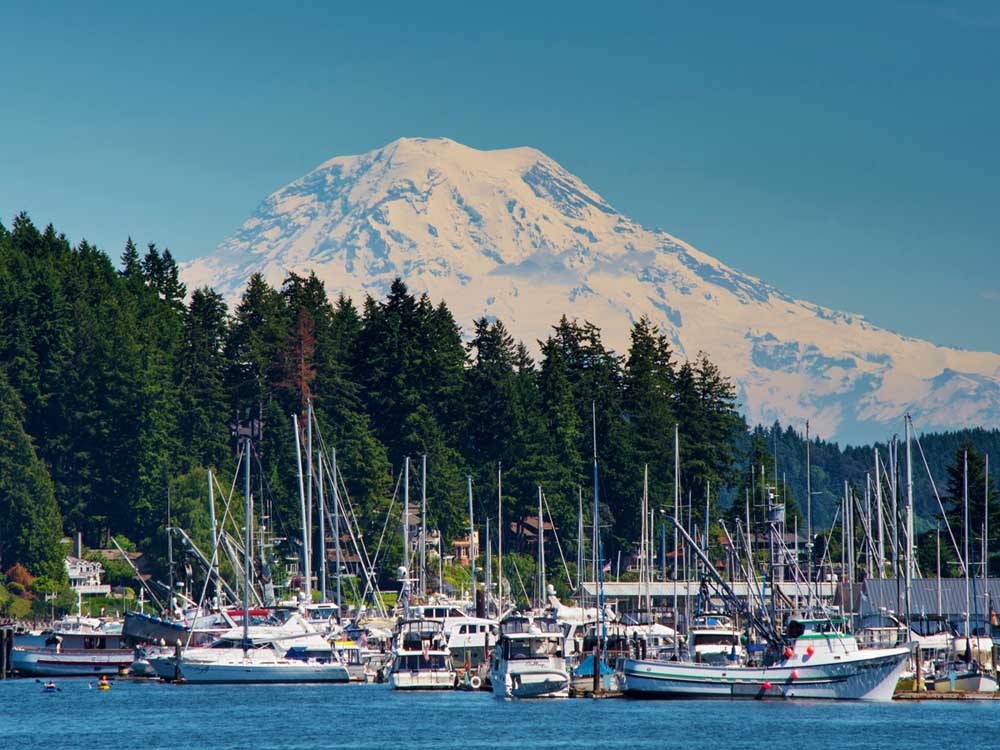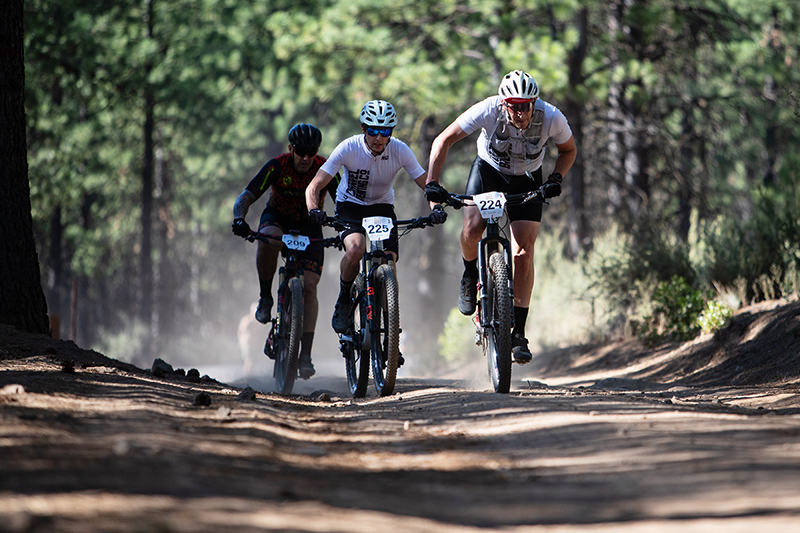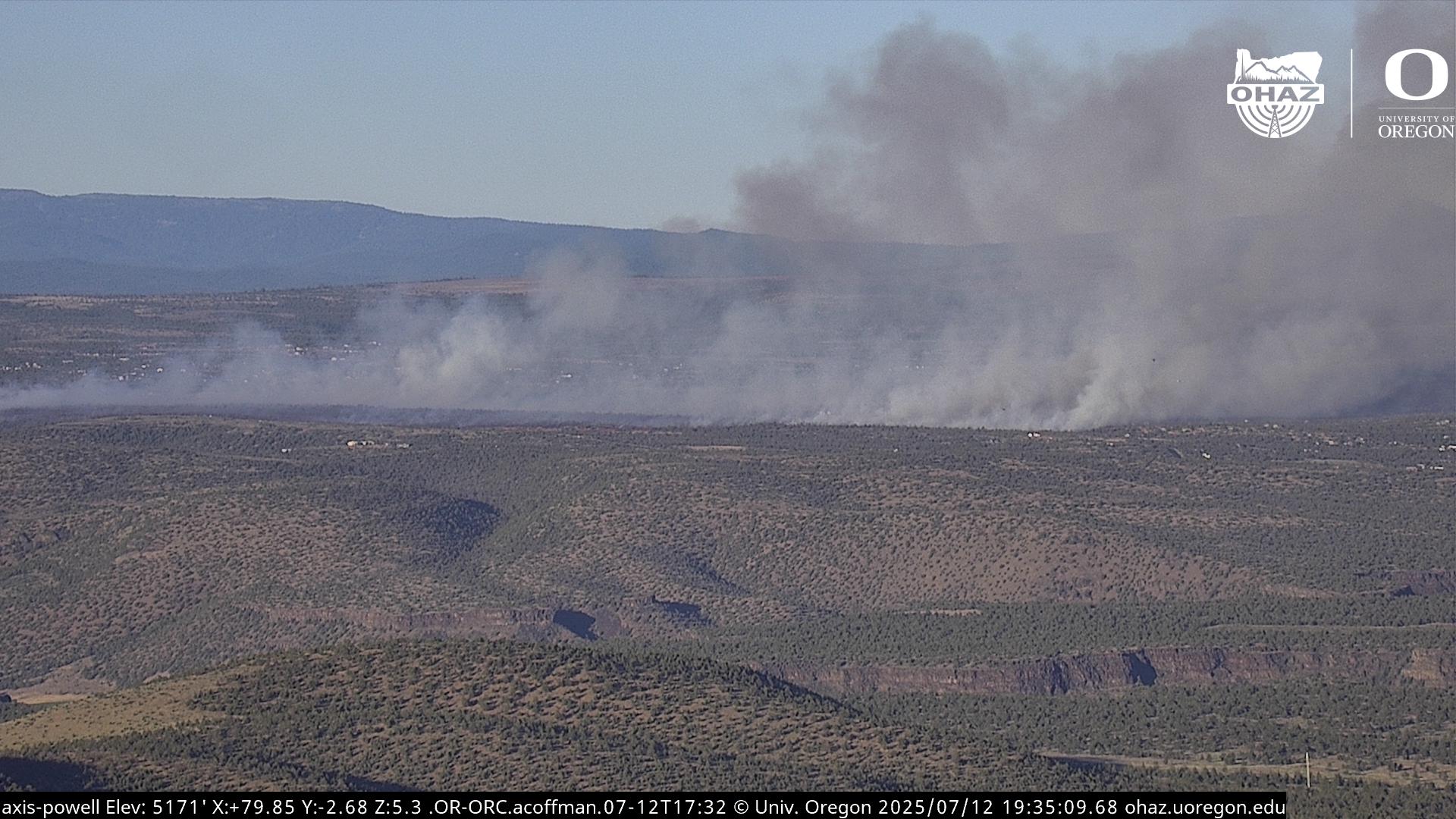Chambers Bay beckons golfers
Published 12:00 am Sunday, April 26, 2015

- Barb Gonzalez / For The BulletinMasts of sailboats and fishing vessels are overshadowed by Mount Rainier, which rises more than 14,000 feet east of Gig Harbor. Settled in the 1860s, Gig Harbor is a town of 8,000 with a historical main street that wraps around a sheltered keyhole harbor.
{%comp-FFFFFF-br%}
GIG HARBOR, Wash. —
Trending
Dipping a kayak paddle in water as still and smooth as a silk tablecloth, its ripples undulating as if kissed by a gentle breeze, is a perfect way to begin a morning.
A serene sunrise is precious anywhere, but even more so on a saltwater harbor. That’s what greeted me this month when I launched my craft from the dock outside my room at Gig Harbor’s Waterfront Inn.
{%pc-3788464%} I paddled the shoreline toward a weeping willow, its tendrillike branches forming an umbrella over Canada geese swimming in the light of the dawn. I turned and crossed to the marina, where yachtsmen were checking their sails and fishermen were casting off in search of salmon and cod. To the not-so-distant east, 14,411-foot Mount Rainier reflected the glow of the morning.
Gig Harbor is unique among communities in Washington’s Puget Sound. Historically developed along a sheltered keyhole harbor, the town of 8,000 is near enough to much larger Tacoma (12 miles east via the Narrows Bridge) to be a bedroom community, yet sufficiently secluded to have an identity of its own.
Its main street, Harborview Drive, curves around the southern and western shores of its inlet, which is a mile long but has a sand-spit entrance (marked by a small lighthouse) no more than 200 feet wide. The cove was named in 1841 for a “gig,” a captain’s boat from a larger sailing vessel, which found shelter here during rough weather. It was settled in the 1860s and ’70s by Croatian and Scandinavian fishermen whose heritage persists today.
Gig Harbor is a great getaway for those who know about it. Many more soon will, as the late spring and summer of 2015 will be different than any before. The U.S. Open Championship, perhaps the country’s most prestigious golf tournament, is coming to the Tacoma area in mid-June. An estimated 235,000 visitors — thousands of whom will be making their first trips to the Pacific Northwest — will be descending upon the central Sound. There are tourism benefits to be reaped, and Gig Harbor, like other area communities, is looking forward to its share.
Trending
{%pl-3775168%}
Chambers Bay
The tournament, the 115th annual U.S. Open, will be held June 18 through June 21 at the Chambers Bay Golf Club, on a converted quarry beside Puget Sound. Technically located in the city of University Place, the course was built in 2007 specifically to host major golf championships. Its success hosting the 2010 U.S. Amateur tourney gave the United States Golf Association confidence in selecting Chambers Bay for the 2015 Open.
Jeff Stoefen, a 2006 Bend High School graduate now living in Tacoma as the security and transportation coordinator for the U.S. Open, invited me to explore the 18-hole, par-72 course with him. Although golf carts are not allowed on the fairways — as with Oregon’s famed Bandon Dunes resort, it’s made for walking only — we slowly motored along a paved trail, already popular with runners and bicyclists, that follows a ridge line on the east side of the course. It provided a bird’s-eye perspective on the entirety of this compact (900 acres) but very challenging layout.
There is a lot of sand. Indeed, gravel and sand underlie the Chambers Bay links, a vestige of quarry days not long past. Course designer Robert Trent Jones II laid broad fairways across the uneven ground, carefully incorporating lofty dunes, flanking the fescue turf with seemingly impossible bunkers, and shaping wavelike greens sure to intimidate average players.
Extending 7,585 yards from its championship tees, the course will be a stern test for golf’s best, especially if the predictably unpredictable June weather hurls a mix of rain, wind and fog at the course, perhaps with a teaser of sunshine thrown in.
Stoefen told me Chambers Bay has been preparing for this championship event for 2½ years. About 80 percent of attendees, he said, will park in designated areas miles away; shuttle buses will unload them outside Spectator Square, where they will enter through the 41,000-square-foot Merchandise Pavilion. That’s just one of many tents that constitute the temporary bayside village; others include a USGA-member clubhouse, tents for major corporate sponsors (IBM, Rolex, American Express, Lexus) and a media compound.
Daily tickets are already sold out through official channels, but practice-round admission ($50 and $75 per day, June 15-17) may still be purchased from www.usga.org.
In the meantime, Chambers Bay is a public golf course where any golfer can book a tee time up to 90 days in advance. Greens fees range between $225 and $299 through the summer, with play obviously restricted during much of June.
Travel Tacoma + Pierce County, a destination marketing organization, is projecting a $140 million economic boost as a result of the Open. It foresees 87,000 room nights for out-of-area guests, along with car rentals, restaurant meals, souvenirs and state sales tax. And that’s just during the tournament period itself: With an anticipated 150 million television viewers, expectations of tourism growth in the months and years to come are understandably high.
Touring Tacoma
Tacoma will be the hub for most visitors. Since 1983, when the landmark Tacoma Dome arena was constructed and historic Union Station was resurrected as a handsome U.S. courthouse, the city of 200,000 has embraced tourism.
{%pf-3775170%}
The city’s Museum District took shape with the completion of the Washington State History Museum in 1996, followed by the Museum of Glass in 2002 and a new Tacoma Art Museum in 2003. A convention center opened in 2004, with the adjacent Hotel Murano, the city’s finest lodging, refurbished (and renamed) in 2008. The newest piece to the puzzle came in 2012, with the opening of the LeMay America’s Car Museum next to the Tacoma Dome.
{%pr-3775190%} Art glass is the city’s No. 1 cultural attraction. The work of Tacoma native Dale Chihuly is ubiquitous. From the atrium of the 1910 Union Station — in which hang five Chihuly works — signs point to the Bridge of Glass. Crossing railroad tracks and Interstate 705, linking downtown Tacoma to the Museum of Glass, this stunning sight has three parts. The Seaform Pavilion has a ceiling of 2,364 marine-inspired glass objects; the Crystal Towers are 40-foot-tall, glacial-blue pillars; and the Venetian Wall offers 109 works of blown glass inspired by Chihuly’s youthful residence on the Italian isle of Murano, famed for glass-making since the 13th century.
Beside the harbor inlet known as Foss Waterway, steps and ramps weave around a series of fountains to the Museum of Glass. This $48 million showcase of contemporary glass art combines galleries, a theater and an art studio. There’s also a “hot shop” contained within a giant, cone-shaped amphitheater, 90 feet high, that has rapidly become an urban icon.
North of Union Station is the Tacoma Art Museum, an Antoine Predock-designed building with an atrium-style openness that welcomes the outside in. Dozens of original Chihuly glass works are presented in an alcove that rises, ramplike, from the lobby to the first of several galleries. Here also are shown paintings by Degas, Renoir, Pissarro, Gilbert Stuart and Jacob Lawrence, among others.
Perhaps the only downtown Tacoma museum where Chihuly is not represented is the Washington State History Museum. Its central exhibit is The Great Hall of Washington History, which traces the state’s heritage from prehistory to the 21st century.
The LeMay America’s Car Museum is billed as the world’s largest private automobile museum. At any one time, it displays 350 of more than 2,000 cars, trucks, motorcycles and other vintage and specialty vehicles in the collection of the late Harold LeMay. Years in development, the sleek $65 million museum has seven galleries on a 9-acre campus a stone’s throw from downtown.
{%pc-3775182%}
Harbor town
I enjoyed my visits to Tacoma, but I like to hang out in Gig Harbor. It wasn’t all that long ago that its isolation on the Kitsap Peninsula was enforced by geography, a factor that has contributed massively to its charm.
{%pl-3775185%} Before 1940, travel between Tacoma and Gig Harbor was either by boat or via a circuitous 90-mile drive through Olympia. The original bridge — nicknamed “Galloping Gertie” for the way it pitched during high winds — lasted four months before its dramatic collapse. A new mile-long span was completed in 1950. (It was reconfigured for westbound traffic in 2007 when a second toll span opened to carry eastbound vehicles.)
Fishing, boat building, logging and farming once supported the economy. Today Gig Harbor is home port to many vessels that ply Alaskan waters during summer before returning in winter. Everything from dinghies to fishing vessels to 80-foot pleasure crafts are docked in the 650-slip harbor. Marinas, piers and docks extend from one end to the other. The town is particularly proud of its historic net sheds — 17 covered docks, most still privately owned — where nets and gear were loaded and stored by 19th-century fishermen.
The most prominent among them stands at Skansie Brothers Park, a city greensward where Thursday farmers’ markets and a Tuesday night, open-air concert series inspire the citizenry. Nearby a statue of a fisherman pulling a net immortalizes eight Gig Harbor anglers who were lost at sea. This is the site in early June of the annual Blessing of the Fleet.
Galleries, bookstores and other delightful shops line Harborview Drive. At its west end, where the road turns sharply through the Finholm neighborhood, the Harbor History Center occupies the site of an old sawmill. Among exhibits at this fine small museum is the prototype Thunderbird racing sailboat. Today more than 1,400 Thunderbirds are registered around the world, but the first one was built in Gig Harbor in the 1950s by local sailor Ed Hoppen.
It’s great to explore Gig Harbor by foot or by its summer trolley (50 cents a ride), but it’s even better from the water. Captain Tom Drohan’s Destiny Harbor Tours, which leave from the Finholm Marketplace below Anthony’s Restaurant, welcome 30 or more guests aboard a 33-foot former Navy utility boat. A narrated cruise traces both sides of the harbor, from the net sheds to the luxurious private homes and the lighthouse at the harbor entrance.
Dining and drinking
As suits a harbor town, most Gig Harbor restaurants are on or near the water. These include the Tides Tavern, a local institution (built as a general store in 1910) that is as popular for its bar scene as for the seafood served on its deck. The Green Turtle offers a more intimate dining experience at the end of an isolated lane, and the Devoted Kiss Cafe is a charming and casual morning-and-midday spot in Finholm.
{%pr-3775183%} There’s also Netshed No. 9, whose owners, Thad Lyman and Katie Doherty, have converted one of the historic Croatian sheds into a breakfast-and-lunch cafe. The couple also own Brix 25, the town’s most upscale dinner house, on Pioneer Avenue, a couple of blocks above the harbor. The restaurants, Lyman acknowledged, are very different. “It’s like you have one kid who’s into sports and one who’s into music, but you love ’em both,” he said. “At Netshed No. 9, we are committed to fine dining without attitude.”
You can get a takeout order from any Gig Harbor establishment and bring it into 7 Seas Brewing, a craft brewery that distributes its IPAs, stouts and pilsners well beyond Pierce County. The brewpub has no kitchen, but it does have a food truck parked out front.
For more serious imbibers, the Heritage Distilling Co. has had unqualified success in the 2½ years since opening. Its tasting room is in downtown Gig Harbor, but its primary production facility remains uptown, where founder and head distiller Justin Stiefel — a former chemical engineer and U.S. Senate aide — has found a relative gold mine in flavored vodkas, bacon among them. “They take away the fear factor of craft cocktails for the average consumer,” he said. Heritage, which distributes in six states, is planning an expansion to Oregon in September when it will open a second distillery in Eugene’s Whitaker District, Stiefel said.
{%pl-3775189%} The reach of the Minterbrook Oyster Co. extends farther — to China.
Kent Kingman said that since he and his wife, Donna, bought the 1931 company three years ago, he has expanded the market for his premium “Mintersweet Select” shellfish across the Pacific. He welcomes visitors to his 100-acre tidal farm on the Key Peninsula, where he describes the extensive seeding and hand-harvesting process undertaken by his staff.
Visitors might also be able to talk Kingman into a short excursion to the shore of Minter Bay, where the remains of 13 World War I-era naval destroyers lie sunken in the sand. The rusted, barnacled outlines of the vessels are readily distinguishable. They provide additional stability for the oysters, as well as clams, that are farmed here.
{%tr-BDBDBD, 000000, 2%} One subsequent afternoon, I took my golf game to Gig Harbor’s Madrona Links Golf Course. Inspired by my visit to Chambers Bay, I felt compelled to attempt championship form on a local public course. Alas, my septuagenarian partner was far better than I.
It’s too late for me to think about qualifying for the 2015 U.S. Open. But perhaps if I keep working on my game, I may have a chance for — oh, let’s say 2025.
— Reporter: janderson@bendbulletin.com








